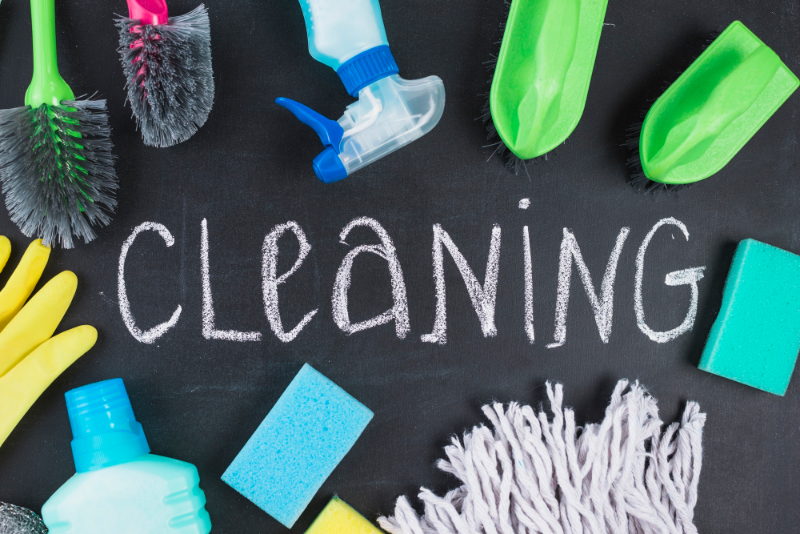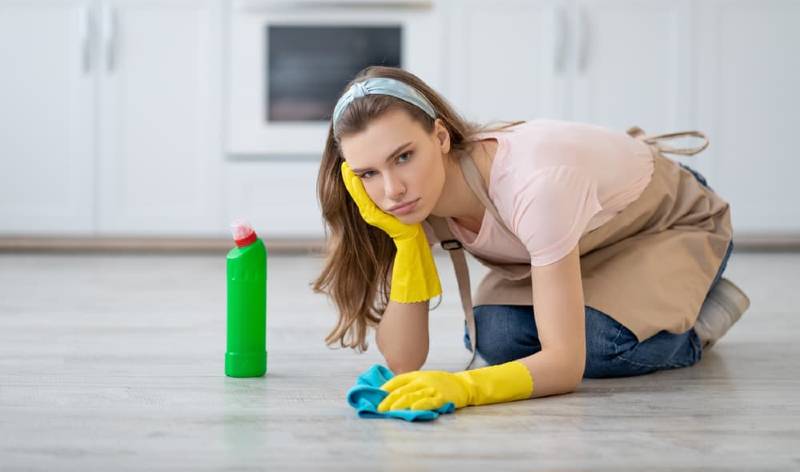Comprehending the Need for Completely Decontaminating and Sterilizing Often Touched Surface Areas in High-Traffic Areas
In the world of public health and safety, the thorough disinfection and sanitization of often touched surfaces in high-traffic areas stand as paramount actions in protecting against the spread of harmful microorganisms. By discovering the various aspects of surface disinfection, from the threats linked with ignoring cleansing procedures to the efficient methods that can be employed, a more clear understanding emerges of the essential function these practices play in safeguarding public wellness.
Relevance of Surface Area Sanitation
Emphasizing the thorough sanitation of high-traffic surface areas is vital in preserving a sanitary atmosphere and stopping the spread of hazardous virus. High-touch surfaces such as door takes care of, light buttons, lift switches, and kitchen counters serve as breeding premises for germs and infections. Regular sanitation of these surface areas is vital to reduce the threat of contamination and transmission of diseases.
By implementing a robust disinfection method, establishments and companies can produce a more secure environment for clients, site visitors, and workers. Appropriate surface area disinfection not only minimizes the spread of infectious conditions but likewise infuses self-confidence in the sanitation and safety and security of the premises. This positive method demonstrates a dedication to health and wellness, which is especially crucial in high-traffic locations where the probability of direct exposure to virus is heightened.
Additionally, surface area disinfection plays a critical role in overall infection control techniques. Incorporated with hand hygiene practices, wearing masks, and preserving physical distancing, complete sanitation of high-touch surfaces forms an extensive defense against the transmission of damaging bacteria. Prioritizing surface disinfection is an essential component of an all natural approach to health and wellness in shared spaces.
Dangers of Ignoring Cleansing Practices
Ignoring complete sanitation of high-traffic surfaces considerably increases the danger of bacterial and viral contamination, positioning a serious threat to the health and wellness of people often visiting these areas. Failure to implement correct cleaning methods can result in the accumulation and spread of hazardous pathogens, consisting of germs and viruses, on frequently touched surface areas such as doorknobs, handrails, elevator switches, and counter tops.

Additionally, neglecting the significance of detailed cleaning not just compromises the well-being of people but additionally weakens efforts to maintain a sanitary and tidy environment. It is vital to acknowledge the significance of proper sanitation procedures in avoiding the spread of infections and guarding public health and wellness.
Reliable Sanitation Techniques
To maintain ideal sanitation and decrease the risk of contamination on high-traffic surface areas, employing efficient sanitation methods is vital. One of the most usual and efficient disinfection approaches is using chemical disinfectants. These items can differ in toughness and composition, with some targeting certain pathogens like infections or bacteria. It is important to adhere to the manufacturer's directions for correct dilution, contact time, and air flow when making use of chemical anti-bacterials to ensure their efficiency - Clear Out Any Clutter.
Another effective method is using UV-C light. UV-C light has actually been shown to be effective in killing a wide range of microorganisms by interrupting their DNA framework, thus stopping them from reproducing. It is necessary to make use of UV-C light appropriately, making sure that the right intensity and exposure time are applied to achieve the wanted sanitation results.
Additionally, using steam cleaning as a disinfection approach can be extremely reliable, particularly on surfaces that are heat-resistant. Steam can pass through permeable surfaces and kill bacteria, viruses, her response and various other microorganisms effectively. When making use of steam cleansing, it is essential to ensure that the surface gets to the needed temperature level for a sufficient quantity of time to guarantee correct disinfection.
Effect On Public Health
The maintenance of high criteria of cleanliness and disinfection on high-traffic surface areas plays a vital duty in safeguarding public wellness. Frequently touched surfaces in locations with high tramp, such as doorknobs, hand rails, elevator buttons, and toilet facilities, function as reproducing premises for hazardous virus. Falling short to sufficiently decontaminate these surfaces can lead to the fast spread of transmittable diseases within communities. By carrying out detailed disinfection protocols, the threat of transmission of viruses, microorganisms, and other germs can be substantially lowered.
In high-traffic areas like airports, colleges, hospitals, and public transport systems, the effect of strenuous disinfection steps can not be understated. Focusing on the sanitization of regularly touched surface areas is a proactive strategy to promoting public wellness and improving the security of individuals in common spaces.
Applying Routine Cleansing Methods
Quickly instituting and sticking to a consistent routine of cleansing protocols is extremely important for preserving the sanitation and safety of high-traffic surfaces. Regular cleaning methods are vital in preventing the accumulation of bacteria and pathogens on often touched surface areas, especially in areas with high foot website traffic. By carrying out an organized technique to cleaning, companies can effectively lower the danger of disease transmission and produce a healthier atmosphere for workers, consumers, and the public.
To establish an efficient cleansing timetable, it is crucial to determine high-traffic locations that require frequent interest. These areas may consist of doorknobs, hand rails, lift switches, restroom facilities, and shared devices. Applying a regular cleaning regimen that targets these surfaces several times a day can dramatically reduce the spread of hazardous germs and viruses.
Additionally, using proper cleansing representatives and anti-bacterials is vital to making certain that surface areas are thoroughly sanitized. Regular training of cleaning team on appropriate cleansing strategies and the importance of adherence to the cleansing timetable is additionally important in preserving a hygienic atmosphere. By prioritizing consistent cleansing discover this procedures, organizations can promote the health and health of people that interact with these high-traffic surfaces.

Verdict
To conclude, it is vital to focus on detailed sanitation and sanitization of often touched surface areas in high-traffic locations to avoid the spread of hazardous microorganisms and keep public wellness. Neglecting proper cleaning practices can increase the threat of contamination and transmission of conditions. By applying normal cleansing methods and making use of efficient sanitation methods, we can create a safer setting for every person (defrosted and cleaned every few months). It is crucial to acknowledge the significance of maintaining tidy surface areas in high-traffic areas to ensure the well-being of the community.
In the world of public health and wellness and safety, the precise disinfection and sanitization of regularly touched surfaces in high-traffic locations stand as critical measures in protecting against the spread of harmful virus. By exploring the numerous facets of surface area disinfection, from the special info risks linked with overlooking cleansing protocols to the reliable methods that can be utilized, a more clear understanding emerges of the crucial duty these methods play in guarding public health.Additionally, utilizing vapor cleaning as a sanitation approach can be highly efficient, particularly on surfaces that are heat-resistant. When using heavy steam cleansing, it is essential to ensure that the surface area reaches the needed temperature level for a sufficient quantity of time to ensure correct disinfection.
In final thought, it is critical to prioritize detailed sanitation and sanitization of often touched surface areas in high-traffic areas to protect against the spread of hazardous microorganisms and maintain public health.